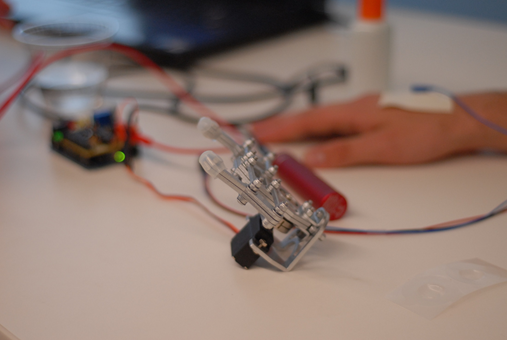The Synapse: An Engineering Design Challenge
A 1-Week Curriculum Unit for High School Chemistry and AP Chemistry Classes.

In this unit, students will design, construct, and test a device that optimizes the transfer of electrical current from one electrode to another. The engineering design challenge is placed within the context of sensorimotor neural engineering.
- In Lesson One: Introduction to Neural Engineering, students will observe neural signals using an EMG-controlled robotic gripper hand.
- In Lesson Two: The Synapse & Action Potential, students learn about electrochemical signals in the nervous system, including action potentials, the synapse, and neurotransmitters.
- In Lesson Three: Designing a Synapse with the Neuron in Mind, students will apply their understanding of electrochemical signals as they design, build, and optimize a circuit in order to meet the criteria of obtaining a certain voltage.
- In Lesson Four: Neuroethics and Brain-Computer Interfaces, students read an article about societal and ethical implications of neural engineering devices and participate in a Philosophical Chairs activity.
Some of the lessons in this unit feature special equipment, including Backyard Brains’ The Claw EMG gripper hand, chemical solutions, and lab ware, and require access to a chemistry wet lab.
The lessons were developed by Paul Zimmer of South Kitsap High School (Port Orchard, Wash.) and Denise Thompson of Orting High School (Orting, Wash.) as part of the 2015 CNT Research Experience for Teachers program.
- Lesson One: Introduction to Neural Engineering
- Lesson Two: The Synapse & Action Potential
- Lesson Three: Designing a Synapse with the Neuron in Mind
- Lesson Four: Neuroethics and Brain-Computer Interfaces
The author of this unit has also been featured in this news article: Teachers Head Back to the Lab for Summer (August 2015).
